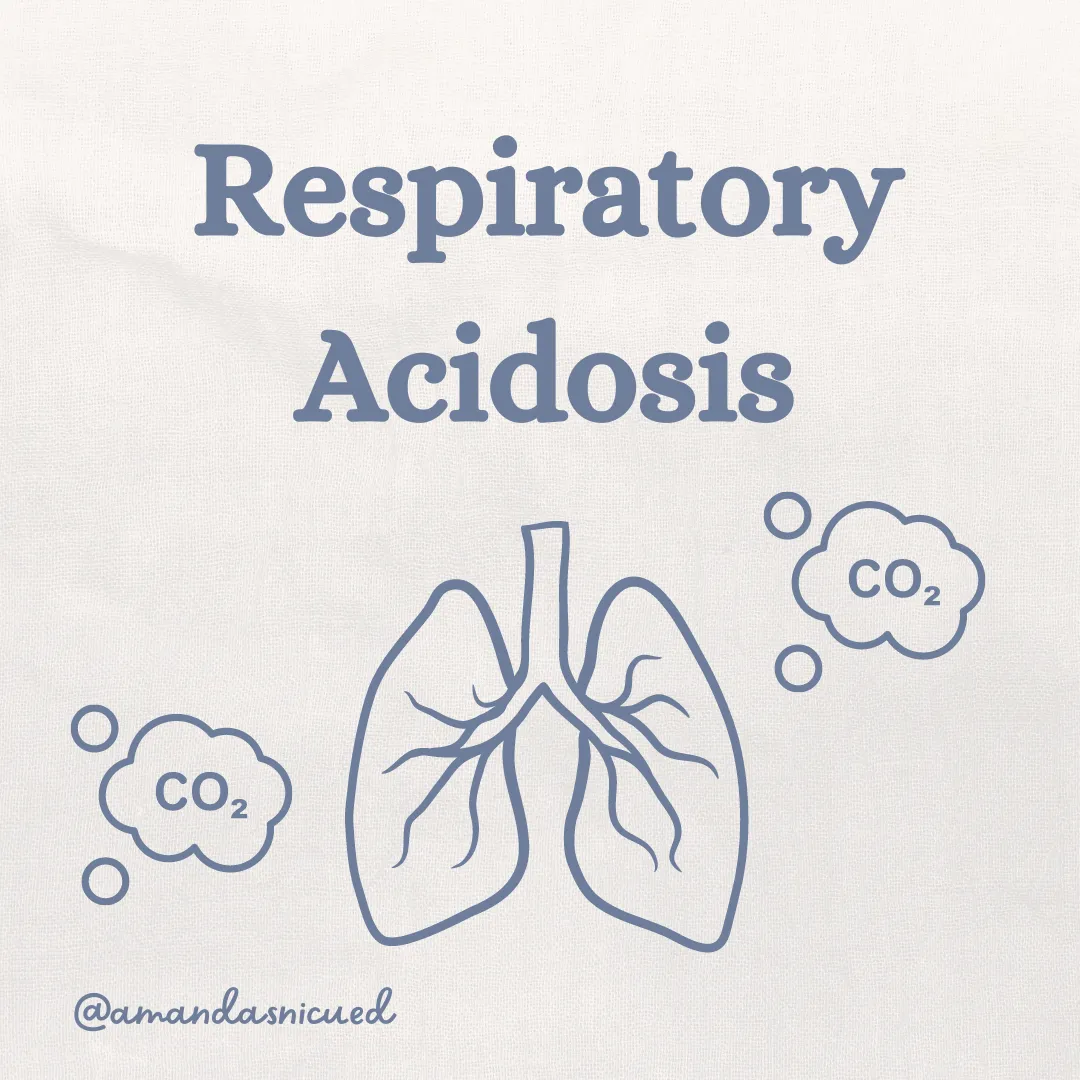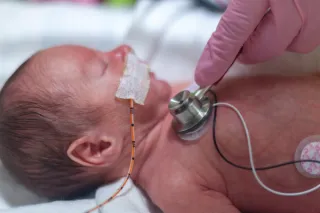
Welcome to Amanda's NICU Education




Hi! My name is Amanda. I'm a NICU nurse, Clinical Nurse Specialist, NICU Educator... basically your NICU BFF. If you want to talk NICU, I'm here for you! I love everything about NICU nursing and I'm eager to learn and share my knowledge with all my NICU friends.
I have been a NICU nurse since 2009 I am currently a Clinical Nurse Specialist in a Level IV NICU in Los Angeles.
I am passionate about educating the next generation of NICU nurses. I share my knowledge through platforms such as Instagram and Facebook and am excited to have you here on my website!
Click on the button below to sign up for my newsletter filled with NICU education and tips for all experience levels.

Not very many people love taking tests but as a self-acclaimed "forever student" who has taken (and passed) five different certification exams I am no longer afraid of tests! "Way to brag", you might be thinking but I want to help YOU pass your certification exam too!
Introducing Amanda's RNC-NIC Success digital course - your ultimate study companion!
Gain unlimited, on-demand access for life, ensuring you're primed to ace your certification exam.
I'm here to help you succeed and I can't wait for you to share with me that you PASSED the RNC-NIC EXAM!!!










Interventions for Respiratory Acidosis
"Respiratory acidosis occurs due to inadequate removal of CO2... the specific intervention depends on the respiratory support the baby is already receiving"
Blood Gas Interpretation & Interventions
One of the most challenging topics in practice and while preparing for the certification exam is blood gas interpretation and determining the appropriate interventions. Let's review it together...
For this week let's focus on interventions to support respiratory acidosis, and we will tackle metabolic acidosis next time.

Need a Refresher on Blood Gas Interpretation? Click Here
Respiratory acidosis occurs due to inadequate removal of CO2. This can result from insufficient alveolar ventilation, airway obstruction, decreased respiratory drive, or ventilation-perfusion (V/Q) mismatch. The specific intervention depends on the respiratory support the baby is already receiving.
When caring for our patients, it's essential to evaluate whether the current therapy provides adequate support based on the clinical exam and correlated blood gas results. Consider the following respiratory assessments:
Is the baby tachypneic, indicating a low tidal volume?
Is there desaturation, suggesting a V/Q mismatch?
Are breath sounds bilateral, and what do they sound like?
Crackles or Rhonchi might indicate pulmonary edema or delayed fetal lung fluid reabsorption.
Is the baby grunting, trying to create their own functional residual capacity?
These assessment findings help provide clues about the babies current status and what they need for support.
Interventions for Respiratory Distress and Acidosis
For a baby who is spontaneously breathing but experiencing respiratory distress (evidenced by grunting, tachypnea, or retractions) and mild respiratory acidosis, CPAP may be a suitable initial intervention. CPAP decreases airway obstruction by splinting the airways open and provides functional residual capacity via PEEP, improving V/Q mismatch. With CPAP, infants' respiratory rates becomes slower and more regular thanks to improved tidal volumes and functional residual capacity.
NIPPV
NIPPV is another respiratory modality for supporting a newborn with respiratory acidosis. It may be used as a primary noninvasive therapy for premature infants with RDS or for infants with moderate respiratory distress who do not require intubation. NIPPV stabilizes the upper airways and prevents end-expiratory collapse, similar to CPAP, but also provides intermittent higher pressures at a set rate. These settings can be adjusted based on clinical exam and blood gas results. In cases of respiratory acidosis, NIPPV can deliver pressures up to 25 cm H2O and rates up to 60 breaths per minute, although rates higher than 40 are uncommon. Higher pressures may even be seen when managing babies with chronic lung disease.
SIMV
SIMV, similar in settings to NIPPV, is an invasive form of ventilation where the baby is intubated. When addressing respiratory acidosis with SIMV or NIPPV, consider ways to increase CO2 excretion. You can increase the rate in increments of 5-10 breaths per minute or raise the PIP by 1-2 cm H2O to increase tidal volume and expel more CO2. Always monitor the clinical exam, blood gas, and transcutaneous CO2 for signs of improvement.
High Frequency Ventilation
For babies requiring high frequency ventilation:
High Frequency Oscillator Ventilator (HFOV): This type of ventilator provides active inspiratory and expiratory pressures using a piston. CO2 removal is largely done by the amplitude but the frequency (Hz) also has influence. To clear more CO2, increase the amplitude (delta P) in increments of 2-5 cm based on blood gas and chest wiggle. Alternatively, wean the frequency (Hz) to enhance oscillation efficacy. Monitor for improvement using chest wiggle, TCOM, and blood gas.
High Frequency Jet Ventilator (HFJV): This provides a very short inspiratory time (0.02-0.03 seconds) at high rates (240-660 bpm, typically 300-420 bpm). HFJV may also use "sigh" breaths at 2-5 breaths per minute to recruit the lungs and prevent atelectasis. To reduce CO2, increase the PIP. If hypercarbia persists despite increasing PIP, raise the rate by 60 bpm. Increasing the PEEP can improve oxygenation as well as reduce CO2.
By following these strategies and carefully monitoring each intervention, we can provide the best respiratory support for our patients.

I always find that reviewing blood gasses on patients at work and discussing the plan with the RTs, NNPs, and MDs helps us have a better understanding of managing respiratory acidosis.
I can't believe it's already June!
Half the year has flown by! Can you believe it? What goals have you set for yourself this year? June is a perfect time to reflect on the past six months and assess your progress. If earning your RNC-NIC or CCRN-N certification is one of your goals, I'm here to help! I offer a comprehensive Certification Review Course and a Study Group where we practice questions together. Both are excellent resources to support you in achieving your goals, and your access never expires! So, you can start preparing even if you're not quite ready to test yet.
Check out the Certification Course
Learn more about the Study Group
Thank you for all the work you do,
Amanda xoxo
Missed my other newsletters? Click here to read them!
References:
Martin, K. (2022). Goldsmith’s Assisted Ventilation of the Neonate (7th Ed). Elsevier
Rüegger, C. M., Owen, L. S., & Davis, P. G. (2021). Nasal Intermittent Positive Pressure Ventilation for Neonatal Respiratory Distress Syndrome. Clinics in perinatology, 48(4), 725–744. https://doi.org/10.1016/j.clp.2021.07.004
Petty J. (2013). Understanding neonatal ventilation: strategies for decision making in the NICU. Neonatal network : NN, 32(4), 246–261. https://doi.org/10.1891/0730-0832.32.4.246

December 2023 Certification Review Webinar
NICU Certification Review



Ready to kickstart your journey to becoming a certified NICU nurse?
Look no further!
Grab my FREE E-Book packed with essential study and test-taking strategies for the RNC-NIC.
In the E-Book I give you the resources you need including the link to access the candidate guide, several types of books to study from, some of my favorite strategies, an outline of the content you should review, and a blank calendar for you to make your study plan!
Frequently Asked Questions About the RNC-NIC exam

What is the RNC-NIC?
The RNC-NIC is a competency-based exam that tests the specialty knowledge of nurses in the United States & Canada who care for critically ill newborns and their families.
The RNC-NICU is a nationally recognized certification that recognizes the registered nurse for their specialty knowledge and skill.

Who can take the RNC-NIC exam?
Nurses can take this exam after a minimum of two years experience in the NICU caring for critically ill newborns and their families.

Which books should I use?
I'm glad you asked! There are many excellent books to help you prepare for the RNC-NIC, I gathered ande describe each of them for you in my FREE e-book.
Is there a course to help me study?
Yes! Many hospitals host their own certification course and there are a few online courses. See my RNC-NIC test taking tips E Book for more information
What happens if I don't pass the exam?
If you don't pass the exam on your first try you can try again after 90 days. You will have to reapply after 90 days and pay a retest fee. There is no limit to the number of times you can take the exam (however a candidate can only sit for the exam twice per year).

Can I make more money if I take the RNC-NIC exam and get certified?
Yes! Many hospitals provide a raise or a bonus for nurses with specialty certifications. Hospitals also typically hire at a higher base salary when nurses have a certification.

Find me @amandasnicued on these channels or Email me
hey nurses don't miss out
© Copyright 2024. AmandasNICUEd. All rights reserved. | Terms & Conditions | Privacy Policy Contact: [email protected]

